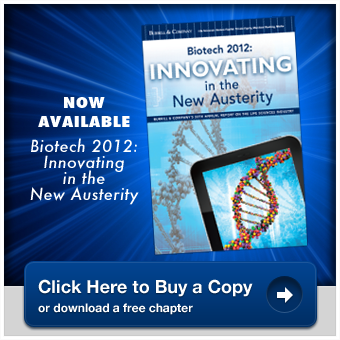An onslaught of competition to branded medications from generic drugs in 2012 drove down spending on widely used prescription drugs—pills to treat such things as high cholesterol and high blood pressure—by 1.5 percent, marking the first time in 20 years that spending fell, according to Express Scripts’ Drug Trend Report.
The decrease in spending on widely used medicines comes as some of the pharmaceutical industry’s biggest blockbusters lost patent protection in 2012. Express Scripts noted that utilization increased for eight of the top 10 traditional therapy classes, while unit costs decreased in seven of them. Nevertheless, overall spending on drugs rose 2.7 percent because of increased spending on specialty pharmaceuticals.
The Express Scripts 2012 Drug Trend Report, which is based on the pharmacy benefits manager’s claims data, offers an interesting glimpse at the habits and ailments of American society. For the second consecutive year, the country spent more on prescription drugs for diabetes than for any other therapy class. Diabetes drug spending increased 11 percent in 2012, driven in part by unit cost increases for popular insulins.
Spending on medications to treat attention disorders increased 14.2 percent in 2012. Utilization increased 8.8 percent, due largely to an increased number of adult patients. Unit costs increased 5.4 percent as a result of a 2012 shortage of active ingredients contained in many of the medications in this class.
Spending on specialty pharmaceuticals, which account for nearly a quarter of all drug spending, rose 18.4 percent, more than offsetting the decreased spending on traditional drugs. In 2012, the Food and Drug Administration approved 22 new specialty drugs, many of which will cost more than $10,000 per month of treatment.
Four of the country’s 15 costliest diseases in terms of drug spend are treated with specialty medications—inflammatory conditions, multiple sclerosis, cancer, and HIV.
Inflammatory conditions such as rheumatoid arthritis, the costliest specialty category, saw spending increase an additional 23 percent. This increase was driven by both a 9 percent increase in utilization and a 14 percent increase in unit cost.
Spending on hepatitis C drugs rose 33.7 percent, more than any other therapy class. Express Scripts attributed the increase to two newly introduced drugs in May 2011. Cancer medications rose 22.3 percent as new targeted therapies drove increased spending in that category.
Express Scripts also noted a widening gap in the cost of brand name and generic drugs. Its Prescription Price Index, based on a market basket of the most highly utilized brand-name medications, increased 12.5 percent in 2012. That outpaced the Consumer Price Index’s 2012 inflation of 1.7 percent. During the same time frame, prices of generic medications declined 24 percent.
March 08, 2013
http://www.burrillreport.com/article-u_s_spending_on_traditional_prescription_drugs_fell_in_2012.html





.gif)